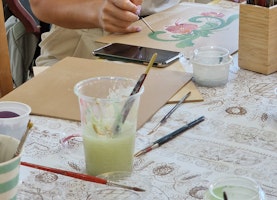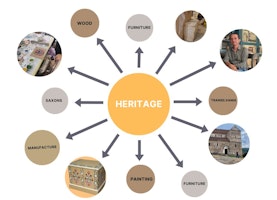Virtual exhibitions
How to incorporate technology into heritage work by building virtual exhibitions

How to incorporate technology into heritage work by building virtual exhibitions

Information, guidance and a list of tools to help incorporate virtual environments and technology in general in your heritage project.

A description of how external digital resources and repositories can be used in an art education project, with an example from the Irish pilot.

The benefits of incorporating 360 videos to preserve intangible cultural heritage are explained.

When documenting intangible cultural heritage, the right equipment can make all the difference in capturing immersive and engaging 360-degree videos. In this training, we will compare four popular 360 cameras.

The exercise can be applied to adult education as well as to students. The aim of this exercise is to learn the basic values of heritage and what is meant by authenticity and uniqueness in a heritage context.

One of the basic criteria that an artefact or a tradition must meet in order to qualify as heritage is age. This practical exercise helps students to understand this principle, to critically analyse a given item and to make value judgements. It can be adapted to any context that aims at heritage education.

Digital tools play an important role in safeguarding, promoting and preserving heritage. Technology has given us what we now call the third category of heritage — digital heritage. Such digital heritage can be accessed in any context and put to use according to one's creativity.
